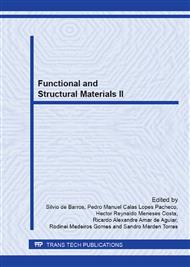p.1
p.11
p.21
p.33
p.41
p.49
p.57
p.65
Analysis of the Temperature Distribution in Friction Stir Welding Using the Finite Element Method
Abstract:
Welding is a fabrication process widely used in several industrial areas. The welding of metallic alloys presents some basic characteristics as the presence of a localized intensive heat input that promotes mechanical and metallurgical changes. Different from conventional welding processes, where macroscopic fusion is observed, friction welding is a solid state welding process where the joint is produced by the relative rotational and/or translational motion of two pieces under the action of compressive forces producing heat and plastic strain on the friction surfaces. Friction Stir Welding (FSW) process has received much attention for its special characteristics, like the high quality of the joints. Although there are several experimental works on the subject, numerical modeling is not well stated, as the process is very complex involving the coupling of several non-linear phenomena. In this contribution a tridimensional finite element model is presented to study the temperature distribution in plates welded by the FSW process. A weld heat source is proposed to represent the heat generated during the process. The heat source model considers several contributions present in the process as the friction between the tool and the piece and the plastic power associated to the plastic strain developed. Numerical results show that the model is in close agreement with experimental results, indicating that the model is capable of capturing the main characteristics of the process. The proposed model can be used to predict important process characteristics, like the TAZ (Thermal Affected Zone), as a function of the welding parameters.
Info:
Periodical:
Pages:
11-19
Citation:
Online since:
June 2013
Price:
Сopyright:
© 2013 Trans Tech Publications Ltd. All Rights Reserved
Share:
Citation:


